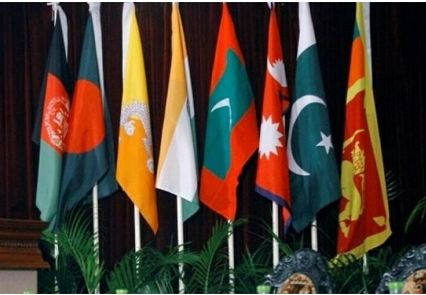Recent positive developments in the relationship between Pakistan and Bangladesh offer a sliver of hope for the South Asian Association for Regional Cooperation (SAARC). While the road to a fully functional and effective SAARC remains long and fraught with challenges, the apparent thaw in bilateral ties between these two significant member states could inject some much-needed momentum into the stalled regional body. However, it is crucial to acknowledge that the revival of SAARC’s fortunes hinges largely on the resolution of the far more deep-seated and complex issues plaguing the relationship between its two largest members: Pakistan and India.
For years, SAARC has been struggling to live up to its potential, often overshadowed by the political tensions and mistrust prevalent within the region. Its history has been one of missed opportunities and unfulfilled promises. Bilateral disagreements and a lack of consistent engagement have hampered progress on crucial areas of cooperation, ranging from trade and connectivity to counter-terrorism and cultural exchange. The strained relationship between Pakistan and Bangladesh, marked by historical complexities and divergent perspectives stemming from the 1971 war, has been one such impediment. This historical baggage has often prevented a more robust partnership, hindering regional collaboration. Therefore, the recent signals of a potential rapprochement are a welcome development. Increased diplomatic engagement, high-level visits, and a renewed focus on areas of mutual interest could pave the way for greater collaboration between Islamabad and Dhaka. This improved understanding could, in turn, foster a more conducive environment for regional dialogue within the SAARC framework.
However, it would be premature to declare a new dawn for SAARC based solely on the improvement of Pakistan-Bangladesh relations. The elephant in the room remains the deeply entrenched animosity between Pakistan and India. The history of conflict, border disputes, and differing strategic objectives continues to cast a long shadow over regional cooperation. The SAARC charter emphasizes the importance of bilateral harmony for effective regionalism, and the persistent state of hostility between its two most influential members directly undermines this principle. The two nations have been locked in a cold war, with political rhetoric and diplomatic spats often taking precedence over substantive cooperation. This rivalry has not only paralyzed SAARC meetings and initiatives but has also forced other member states to navigate a complex and delicate political landscape. Meaningful progress on any substantive SAARC agenda item inevitably gets stalled due to the prevailing mistrust and the tendency to view regional initiatives through the prism of bilateral rivalry. Whether it’s a proposal for a regional trade agreement or a joint infrastructure project, the initiatives often fall prey to the lack of consensus between these two major players.
Unless Pakistan and India find a way to engage in sustained dialogue, address their core concerns, and build a modicum of trust, SAARC will likely remain in its current state of suspended animation. While improved relations among other member states, such as the Pakistan-Bangladesh rapprochement, are undoubtedly positive and can contribute to a more cooperative atmosphere, they cannot substitute for a functional working relationship between Islamabad and New Delhi. The sheer size, economic power, and strategic importance of these two nations within the South Asian context mean that their bilateral dynamics significantly impact the entire region and, consequently, the effectiveness of SAARC. Their disagreements often seep into the regional body’s agenda, making any collective decision-making process difficult, if not impossible. The smaller nations of SAARC, such as Nepal, Sri Lanka, Bhutan, and the Maldives, are often caught in the middle, unable to push their own agendas forward without the cooperation of the two largest economies.
In conclusion, the potential revival of Pakistan-Bangladesh relations is a positive sign for regional cooperation within South Asia. It demonstrates a willingness among member states to overcome past grievances and explore avenues for collaboration. It shows that progress is possible, even if it is incremental. However, the future of SAARC is inextricably linked to the relationship between Pakistan and India. While the improved Islamabad-Dhaka dynamic might create a slightly more favorable backdrop, a genuine revitalization of SAARC requires a fundamental shift in the dynamics between its two major players. Until Pakistan and India find a path towards peaceful coexistence and constructive engagement, SAARC will continue to fall short of its promise as a vehicle for regional integration and shared prosperity. The journey towards a truly effective SAARC is a long one, and its success hinges on overcoming the deep-seated mistrust that currently defines the relationship between its two most significant members. The dream of a united and prosperous South Asia, as envisioned by the founders of SAARC, will remain a distant one until these two nations can find a way to work together.

















